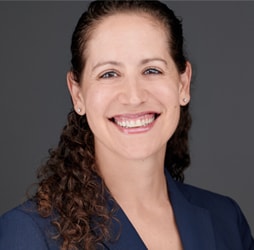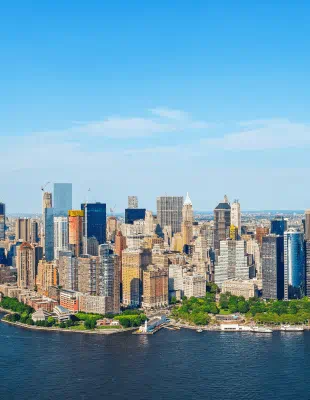With thanks to our contributors:
Zane Sloane, Senior Transport Engineer
Pablo La Roche, Principal, Architecture and Urbanism
Norman Crowley, Founder, Cool Planet
Cristina Garcia, EDA Product Lead
Jessica Hanisch, Climate Risk Consulting Lead, Germany
The global climate crisis is at a tipping point. With temperatures surpassing the critical 1.5°C threshold in 2023, the urgency for decisive action across all sectors has never been more pressing. The challenges we face are immense, but we also have an opportunity to reshape our cities, industries, and economies for a more resilient future.
At Arcadis, we recognize that addressing climate change requires a holistic approach - one that integrates mitigation and adaptation across multiple sectors.
So, what are the most significant trends shaping the future of climate action?
Our goal is to work towards a planet positive future. As we confront the reality of a warming planet, understanding and managing climate risks is paramount. It will take everyone from across governments, business and communities to reduce emissions while adapting to a changing climate. One of the most significant trends we see today is the growing focus on comprehensive climate risk assessments.
In the built environment, a critical trend is the shift towards designing net-zero or planet-positive buildings.
This trend towards sustainability in construction is also complemented by technological solutions such as Arcadis’ Net Zero Catalyst and Enterprise Data Analytics (EDA), which provide clients with clear pathways to achieve their sustainability goals.
At the same time, the conversation going forward needs to center around how the public and private sectors can effectively work together so that legislation is practical, enforceable and measurable, is supported by robust governmental investment, and creates the change needed at the pace required.
Where should we focus our efforts to mitigate the worst effects of climate change?

Given the current trajectory, climate action must be multi-faceted, addressing both mitigation and adaptation. Effective climate action requires cities, industries, and businesses to work together, supported by robust governmental policies. Collaborative efforts across these sectors can create synergistic effects, enhancing the overall impact of individual initiatives.
One area of focus should be on the built environment, where strategies like improving energy efficiency and retrofitting existing structures can yield significant benefits.
Different stakeholder groups seeking climate solutions naturally have varying priorities. For our public sector clients, the primary role is to safeguard the public while ensuring the efficient use of public funds. This requires a deep understanding of both current and future risks to critical areas like infrastructure stability, energy supply, and the movement of people and goods. With this understanding, they can develop and implement plans to mitigate potential problems or adapt to emerging challenges.
-
Read more
For our private sector clients, the more pressing concern is derisking their portfolios and adapting to evolving legislation. Unlike governments, the private sector often faces challenges in adopting a long-term perspective due to the pressures of annual financial reporting and share price volatility. However, our collaboration with Cool Planet, our decarbonization partner for Mission Zero, has demonstrated that companies are committed to sustainability and can be remarkably agile and responsive when needed. Mission Zero is an end-to-end decarbonization service where Arcadis and CoolPlanet design and execute our clients’ decarbonization roadmap projects across global complex industrial footprints. This allows large organizations to effectively outsource their decarbonization delivery needs, enabling high impact projects to be delivered at pace and scale, keeping them on track for regulatory disclosures and corporate commitment dates.
How do we balance the short-term needs and long-term ambitions to create lasting change?
The tension between short-term needs and long-term investments is a significant challenge. However, it also presents an opportunity to align immediate actions with broader sustainability goals. One of the key opportunities lies in making investments that deliver immediate benefits while also preparing for future challenges.
-
Read more
There are an increasing number of “black swan” weather events and, particularly for larger cities, there are multiple hazards to consider and adapt to – drinking water reservoirs running dry, one in 100-year flood events, excessive temperatures causing urban heat islands that make equipment overheat, affecting systems availability and reliability.
Fortunately, we are seeing rapid advancements in solutions to our challenges. Solar, wind, and battery technologies are improving at a remarkable pace, with costs significantly decreasing as technology and manufacturing evolve to meet growing demand.
Another key opportunity lies in multi-purpose infrastructure. Projects that integrate flood protection with urban green spaces, for example, not only enhance resilience but also improve the livability of our cities.
-
Read more
It’s crucial for leaders to avoid making decisions in isolation, as this can create new challenges elsewhere. For example, electrifying buildings or transportation is only effective if the electricity grid has the necessary infrastructure to handle the increased demand.
When we design for both functionality and sustainability, we create infrastructure that serves multiple purposes. Our work in New York, where we are transforming an industrial pier into a waterfront park, is a perfect example of this. It’s designed with climate change in mind, responds to the local ecosystem, and will offer new, vibrant public spaces - showing that sustainable design can have immediate and long-term benefits.
What steps can be taken to navigate the complexities of climate action?
It’s not only about identifying climate risks but also translating them into actionable strategies that can be implemented effectively.
Intelligent solutions like Net Zero Catalyst can help clients understand their current climate impact and provide suggestions for a glide path to net zero, whilst EDA and Climate Risk Nexus focus on personalized strategies to achieve sustainability alongside broader organizational ESG goals. These tools translate the impacts of climate risk onto an organization’s assets and portfolios, and leveraging them can help clients navigate the complexities of climate action and adaptation, from assessing risks through to implementing effective mitigation strategies.
First and fast steps: Mobilizing for immediate impact
The path to climate resilience may seem daunting, but with the right will, experience, expertise and innovative solutions necessary, we can make positive progress.
By discussing the integration of future weather data into building design, we’re not just responding to past conditions - we’re preparing for the future. Arcadis' deep knowledge and robust analytics allow for the development of tailored solutions that help clients take those crucial first steps. Together, we can shape a planet positive future.














